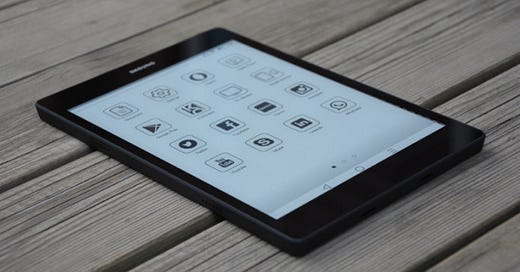Tablets are not comparable to Android-based e-readers
Reviewers not familiar with the E Ink world can make irrelevant observations
Some reviews of Android-based e-readers automatically compare them to tablets. As a result, they are judged on their ability to perform tablet-related tasks. Another complaint in these reviews is pricing, assuming that these e-readers are luxury or restricted devices and don’t deserve to be priced close to mid-range and high-end tablets or smartphones. Thus, the argument is made, why choose a device whose use-cases can be performed far better by regular tablets that often cost less? I believe the answer is the same as why many users insist on using an E Ink e-reader for reading.
Android opens the possibility of installing a few applications that add functionality not available in traditional e-readers. Nevertheless, the added functionality does not negate that we are dealing with a different type of e-reader. Playing games, watching a video, note-taking in a third-party application, streaming music or browsing multimedia intensive websites are not the purpose of these devices.
While additional functionality needs particular adaptations – e.g., a larger battery, more RAM and more robust processors – they are not adequate for fully-fledged tablets. For example, a battery capacity of above 3000 mAh is sufficient for an Android-based e-reader but not a regular tablet. An e-reader is not used to stream multimedia for hours, while its front light and WiFi are permanently activated.
The making of irrelevant points in reviews of these devices points to a broader issue: e-readers generally receive little attention in technology publications, let alone niche Android-based ones. As a result, many reviewers seeing something different try to categorise these devices within the familiar. When approaching an E Ink device with tablet functionality, the default response of some is to question their existence due to their superficial similarity to traditional tablets.




